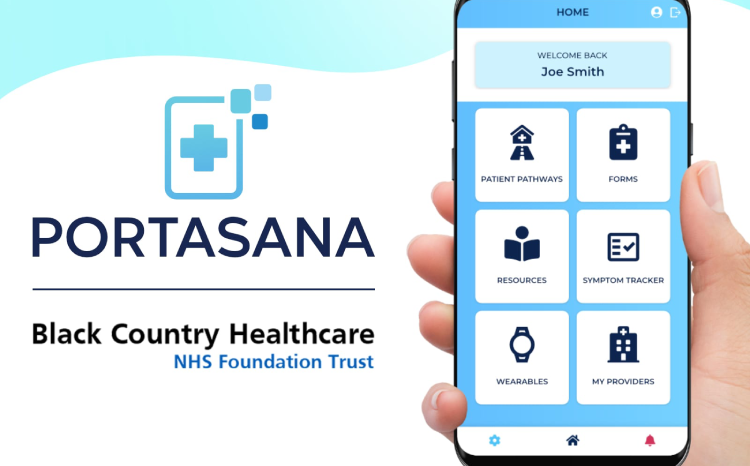PACS tomorrow
- 16 June 2005
 Daloni Carlisle
Daloni Carlisle
PACS – picture archiving and communication systems – were meant to be one of the early deliverables that would prove the worth of the national programme for IT. But with only two hospitals live so far and less than two years to get the rest up and running, many doubt that the ambitious timetables set originally will be achieved.
The political importance of PACS should not be underestimated. The health service is facing is toughest target yet – to get the wait between referral and treatment down to 18 weeks by the end of 2008. Achieving it means eliminating the wait for diagnostics; implementing PACS is central.
Matthew Coates, head of secondary care at the DH, recently reported on progress. In jovial mood he announced to a conference organised by the Health Service Journal in May: “I am pleased we are live in the first two sites. We need to press on with the other 139 that we need to do to get the job finished in the two year period.”
As of last week (June 10) the total number of live sites remained at two, namely West Dorset General Hospitals trust and Hillingdon Hospital trust. Meanwhile, health economies are reporting significant delays to their implementation plans.
Postponed
Berkshire, which had been due to start implementing its roll out in April next year, has had its start date has been put back nine months by the local service provider, Fujitsu Alliance. “It’s fallen by the wayside for now,” said one local IT manager. “We wouldn’t be surprised if there were further delays.”
“There is no chance of getting 80% of hospital trusts live by next March,” says one NHS insider, referring to the targets set by NHS Connecting for Health. “To get 80% by the following March would be hugely challenging but doable.”
CfH won’t elaborate on how the clusters are progressing, saying only: “The implementation plans are agreed and progress varies from cluster to cluster.”
The problem is not resistance to PACS, which is universally recognised as A Good Thing, doing away with expensive, cumbersome film, reducing clinical risk and cost as well as improving patient services.
As Bill Flatman, director of ICT at Portsmouth Hospitals trust, which implemented possibly the world’s first GE Centricity PACS system in 2003, says: “There is a lot of clinical acceptance. It’s one of the systems people complain about if it’s not there.”
Affordability gap
The main delaying factor, according to NHS sources, is affordability. This is despite the national programme negotiating deals with suppliers that are said to cut the capital cost of PACS by 50%.
Because deployment is not fully funded, even with these discounts the costs are high. Local health economies will carry around 90% of the capital investment and all the revenue for running PACS.
The so-called ‘affordability gap’ is evident from a number of published business cases put together by the SHAs. While they support the idea that implementing PACS will be cheaper in the long run, the upfront capital investments look huge to a cash-strapped NHS.
In March 2005 Hampshire and the Isle of Wight SHA approved a ten-year, £38.5m PACS project, and that doesn’t even include Portsmouth Hospitals NHS trust, which funded its PACS locally through a managed service contract rather than as a capital project.
With only £3.4m available from national funds, the HIOW SHA plan envisages £35.1m coming from the local health economy, more than £10m of it in the first year. The business case argues for a souped up ‘enterprise wide’ PACS with a network connecting all sites on the basis that this will, eventually, release more in cash savings than a standard PACS covering radiology only.
But it will cost, requiring £12.9m capital funding over three years. Only half of this will come from HIOW SHA reserves so trusts must fund the rest. The remainder of the £38.5m price tag is running costs; the SHA has committed to meet these for the first 30 months at a cost of around £8m.
The HIOW SHA now has to persuade the trusts to sign up. Some have agreed – North Hampshire Hospital trust signed up at a special trust board meeting on June 14. Its new PACS will cost £858,000 in capital and add £400,000 to £500,000 a year to the hospital’s running costs.
But others – such as the Isle of Wight Healthcare trust – have put their plans on ice saying it is too expensive.
As one insider put it: “The SHA has said to trusts: “This is something we have to do so get on with it.” They have turned round and said: ‘No we won’t. You have to pay for it’.”
“It is expensive,” says another NHS trust finance director. “The financial benefits are there but they are very hard to prove.” For example, it’s not clear from a financial viewpoint how to quantify the impact of PACS on patient pathways and movement towards the 18-week target.
Mr Flatman is clear. “I am very glad we went ahead when we did with a managed service contract rather than a capital purchase. It feels as though we have kept our costs down and this is perhaps something the auditors should look into.”
Standardisation
There is also unhappiness with the standardisation that being a core service imposes. “Our clinicians want an integrated solution where the image is part of the electronic patient record rather than having to exit the EPR and call up an image on a web based system,” says the finance director. “With the system on offer via the cluster that’s not possible.” The trust in question is a foundation trust so they are going elsewhere.
A senior IT manager added: “I think we need more plurality. It’s not a product where you need commonality. By making it a core product they have stifled people.”
Meanwhile, progress in the North East and Eastern clusters is being held up by the lack of a PACS supplier. A CfH spokesman said: “Negotiations are underway and we expect to make an announcement later this year as to who has been successful.”
Some trusts and SHAs have decided to do as much as they can in advance of any announcement. “We are very keen to get rolling with the NPfIT solution as soon as the contract is signed,” says Gary Steen, deputy chief information officer in Essex.
His SHA has developed a £6.7m business case and is now forging ahead with making equipment specifications, deciding where to place it and developing training plans.
But for all the concerns, those using PACS are happy. Linda Chappell, PACS lead at West Dorset General Hospitals trust which went live in April 2005, says: “It’s a huge advantage for us.”
With five community hospitals, each with a minor injuries unit staffed by nurses, getting images viewed by the specialist at the central hospital was a lengthy and costly procedure.
“In the past we have had to transport images and patients up to 20 miles for them to be seen by a specialist,” she says. “The new system means a nurse will be able to ring up the main hospital site and get somebody to look at an image straightaway.”
She’s talking in the future tense as the system is not fully integrated yet. “It’s going well but we have not stopped printing film just yet. We are reluctant to force people to rely on PACS until we are 100% sure it is accurate,” she says.
So far, more than 400 staff have been trained and she anticipates that the hospital will save £250,000 a year in film and chemicals.




